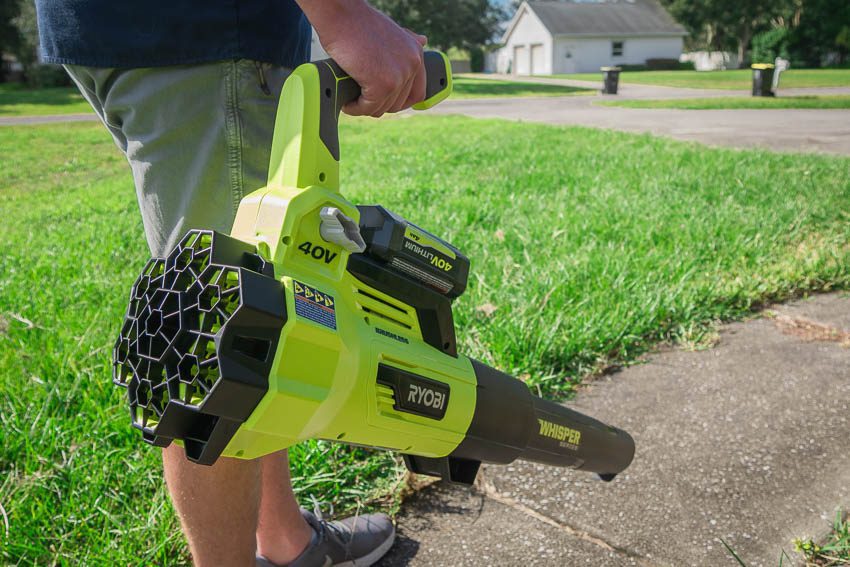Have you ever wondered why your leaf blower seems to be vibrating excessively? Well, fret not, because in this article, we will shed light on the possible reasons behind this common issue. Excessive vibration in a leaf blower can signal anything from a simple fix to a more serious problem. From loose parts to engine issues, understanding the cause of the vibrations will not only help you solve the problem but also ensure the longevity of your leaf blower. So, let’s get into it and find out what could be causing all that excessive shaking!
Introduction
Welcome to our comprehensive guide on excessive vibration in leaf blowers. As avid gardeners and leaf blower enthusiasts, we understand the frustration that excessive vibration can cause during your outdoor cleanup activities. In this article, we will explore the possible causes of excessive vibration in leaf blowers, how to identify the issue, the effects it can have on both the machine and the operator, steps to minimize vibrations, tips for safe leaf blower usage, and when it’s time to seek professional help. So, grab your favorite gardening tool and let’s dive in!
Possible Causes of Excessive Vibration
1. Imbalanced Impeller
One potential cause of excessive vibration in leaf blowers is an imbalanced impeller. The impeller is a key component responsible for generating the airflow in the blower. Over time, it may become imbalanced due to dirt buildup, debris, or warping. This imbalance can lead to excessive vibrations when the blower is in operation.
2. Loose or Damaged Parts
Another common cause of excessive vibration is loose or damaged parts within the leaf blower. These parts can include screws, bolts, blades, or the impeller itself. If any of these components become loose or damaged, it can create instability and result in increased vibrations during operation.
3. Worn or Faulty Engine Mounts
Leaf blowers are powered by engines that need to be securely mounted within the blower housing. If the engine mounts become worn or faulty, it can result in increased vibrations. Over time, the constant movement and vibrations can lead to further damage to the engine and other components.
4. Fuel Mixture Issues
In some cases, excessive vibration can be caused by fuel mixture issues. If the fuel mixture is too lean or too rich, it can cause the engine to run improperly and generate more vibrations. This could occur due to improper carburetor adjustments or using the wrong type of fuel.
How to Identify Excessive Vibration
1. Visual Inspection
To identify excessive vibration in your leaf blower, start with a visual inspection. Look for any visible signs of damage, loose parts, or imbalanced impeller blades. Check if there are any noticeable abnormalities that could be causing the vibrations.
2. Physical Inspection
Next, perform a physical inspection by carefully handling the leaf blower while it is turned off. Feel for any loose or wobbly parts, such as the impeller or engine mounts. Any instability or abnormal movement can indicate the presence of excessive vibration.
3. Testing with Tachometer
For a more precise measurement of vibration, consider using a tachometer. This handy tool measures the revolutions per minute (RPM) of the engine, allowing you to determine if there are any irregularities. If the RPM fluctuates significantly or is consistently higher than usual, it may indicate excessive vibrations.
Effects of Excessive Vibration
1. Decreased Performance
Excessive vibration can significantly impact the performance of your leaf blower. It can cause the blower to become less efficient in clearing leaves and debris, as the excessive vibrations disrupt the airflow and stability of the blower. This decrease in performance can extend the time and effort required for your outdoor cleanup tasks.
2. Increased Wear and Tear
Continued operation with excessive vibrations can lead to increased wear and tear on various components of the leaf blower. The constant shaking and movement can cause faster degradation of parts, potentially leading to costly repairs or the need for premature replacement.
3. Safety Hazards
Excessive vibration not only affects the performance and lifespan of the leaf blower, but it can also pose safety hazards. The vibrations can make it more challenging to maintain control of the blower, increasing the risk of accidents, such as loss of grip or unintended movement. It is essential to address excessive vibrations promptly to ensure the safety of both the operator and those nearby.
Impact on Operator Comfort
1. Hand Arm Vibration Syndrome (HAVS)
Excessive vibration in leaf blowers can have a negative impact on the operator’s comfort. Prolonged exposure to these vibrations can lead to Hand Arm Vibration Syndrome (HAVS). HAVS is a condition characterized by numbness, tingling, pain, and loss of dexterity in the hands and arms. It is essential to minimize vibrations to reduce the risk of developing this uncomfortable and potentially debilitating condition.
2. Fatigue and Discomfort
The constant vibrations produced by leaf blowers can also contribute to operator fatigue and discomfort. The repetitive shaking and movement can strain the muscles and joints, leading to muscle fatigue, soreness, and discomfort. This can make it more challenging to complete tasks efficiently and comfortably.
3. Reduced Productivity
Excessive vibrations not only impact the physical comfort of the operator but also their productivity. The discomfort and fatigue caused by vibrations can result in decreased focus and efficiency. This can lead to longer work times and reduced productivity, affecting the overall outcome of your outdoor cleanup activities.
Steps to Minimize Vibrations
1. Tighten Loose Parts
If you notice any loose parts during your inspections, the first step is to tighten them appropriately. Use the appropriate tools to secure any screws, bolts, or other fasteners that may have become loose. This simple step can often resolve the issue of excessive vibrations.
2. Balance the Impeller
If an imbalanced impeller is causing the vibrations, consider balancing it. Follow the manufacturer’s instructions to remove the impeller and clean it thoroughly. If necessary, use a balancing kit or consult a professional to ensure the impeller is properly balanced before reinstallation.
3. Replace Worn Engine Mounts
If the engine mounts are worn or faulty, it is important to replace them. Engine mounts provide essential stability, and worn mounts can contribute to excessive vibrations. Consult your leaf blower’s manual or reach out to a professional for guidance on replacing the engine mounts.
4. Check and Adjust Fuel Mixtures
To address fuel mixture issues, start by checking the carburetor adjustments. Ensure they are set according to the manufacturer’s specifications or consult a professional if you are unsure. Additionally, using the correct fuel and ensuring it is not contaminated can help minimize vibrations caused by fuel mixture issues.
Tips for Safe Leaf Blower Usage
1. Wear Appropriate Personal Protective Equipment (PPE)
When operating a leaf blower, always prioritize safety by wearing the appropriate personal protective equipment (PPE). This includes safety glasses or goggles, hearing protection, gloves, and sturdy footwear. These precautions help protect against potential debris, noise, and vibrations.
2. Maintain Good Posture and Grip
Maintain good posture while operating the leaf blower to minimize the impact of vibrations on your body. Stand with your feet shoulder-width apart, keep your back straight, and hold the blower with a firm grip. This will help distribute the vibrations more effectively and reduce strain on your body.
3. Take Regular Breaks
To avoid excessive exposure to vibrations, take regular breaks during extended periods of leaf blowing. This allows your body to rest and recover from the effects of the vibrations. Hydrate, stretch, and move around during these breaks to further alleviate any discomfort.
4. Choose Low Vibration Models
When purchasing a leaf blower, consider choosing models specifically designed to minimize vibrations. Look for leaf blowers with features such as anti-vibration technology or ergonomic designs that prioritize operator comfort. Investing in a low vibration model can significantly reduce discomfort and the risk of developing conditions like HAVS.
When to Seek Professional Help
1. Persistent Excessive Vibration
If you have followed the steps to minimize vibrations and the issue persists, it may be time to seek professional help. A qualified technician will have the expertise to diagnose the problem accurately and provide necessary repairs or replacements.
2. Inability to Identify or Resolve the Cause
If you are unable to identify the cause of the excessive vibrations or if your attempts to resolve the issue have proved unsuccessful, consulting a professional is recommended. They can conduct a thorough inspection, identify the underlying problem, and offer appropriate solutions.
3. Safety Concerns
If the vibrations create safety concerns or pose a risk to the operator or surrounding individuals, it is crucial to seek professional help immediately. Putting safety first is of utmost importance, and a professional can assess the situation and provide timely advice or repairs to mitigate any risks.
Conclusion
Excessive vibration in leaf blowers can be a frustrating and concerning issue for both the machine and the operator. By understanding the possible causes, effects, and steps to minimize vibrations, you can ensure a more efficient and comfortable experience during your outdoor cleanup tasks. Remember to prioritize safety by using appropriate PPE, maintaining good posture, and taking regular breaks. And when in doubt, don’t hesitate to seek professional help if the vibrations persist or pose safety concerns. With these insights and tips, you’ll be well-equipped to tackle excessive vibrations and enjoy a smoother leaf-blowing experience. Happy gardening!



































